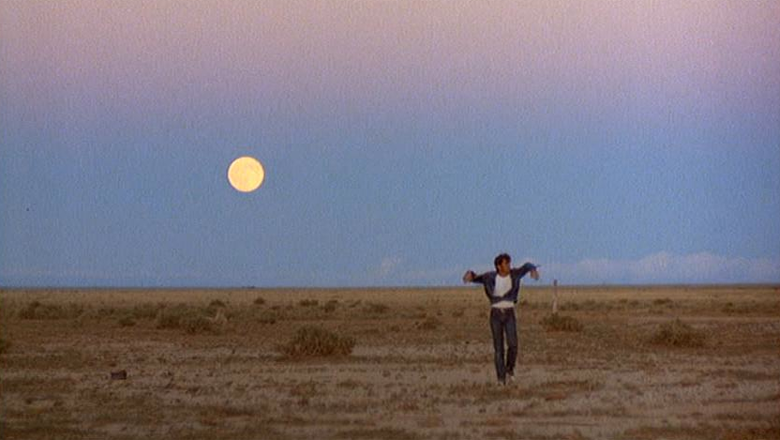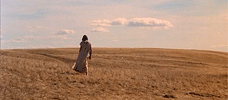Long before he started making movies, Terrence Malick studied philosophy at Harvard and Oxford in the ’60s (the latter as a Rhodes Scholar, though he left before completing his doctorate) before going on to translate Heidegger, teach at MIT, and write for The New Yorker. It wasn’t until his late twenties, after working briefly as a script doctor, that he started working on his first film, Badlands. The singular body of work that resulted can and should be approached as a series of sometimes disparate images, often with only a few direct clues as to how one might piece together and make sense of them all. Most often this comes in the form of lyrical, even tangential narration set to breathtaking imagery, a stylistic footprint that’s proven to be both distinct and divisive.
Despite Malick’s cosmopolitan, interdisciplinary forebears, his work is distinctly American: Badlands posits a twisted version of the American Dream; Days of Heaven may be viewed, at least in part, as a meditation on immigrant labor; The Thin Red Line, which arrived a full twenty years later, centers around a group of philosophically minded soldiers in World War II; and The New World is a retelling of America’s creation myth. Given the latter two in particular, it would seem as though Malick were either a historian or a flag-waver. Rather, he’s simply apt at finding stories conducive to his largest concerns, the most prevalent of which is innocence. Tellingly, there exists an interview with him from the 2007 Rome Film Festival, which took place under the condition that his own work would not be discussed. Instead, Malick wanted to talk about his favorite Italian movies. He played clips of films directed by such as auteurs as Fellini and Totò, mentioning as his reason for choosing almost every single one of them their portrayal of innocence. In not explicitly discussing his own work, he was speaking volumes about it. Take, for instance, his thoughts on Alberto Sordi, who played the title character in The White Sheik:
He was great. His face glowed with joy and innocence, just like Chaplin1, Benigni, and Totò… he makes you become a child again.
Or, in the same vein, why a certain film by Pietro Germi appealed to him:
It’s the gladness, the innocent quality it exudes… its humor is a celebration of innocence, of the type we don’t really see anymore.
Malick’s scope is vast, and yet his oeuvre has consistently, if subtly, highlighted this one thematic through-line. We see it in the faces of his characters, hear it in their voices, and feel it in their souls with which Malick is so concerned. Rather than preach from on high, however, he almost always brings his camera down to ground-level so that we may see the world the same way that they do and better understand their plight.
This particular glance comes in tandem with dual retrospectives of Malick’s work: one at the Los Angeles County Museum of Art, the other at the Museum of the Moving Image in New York. Both were programmed in anticipation of the long-awaited release of The Tree of Life, Malick’s first film in six years. The guest speakers at the LACMA series (who include Sissy Spacek, Jim Caviezel, and Jack Fisk), when asked about the mysterious director with whom they’d had the rare experience of working, repeatedly used words like “gentle” and “humble” to describe him2. This, despite the enormity of his films, which have been pegged by some as pretentious and soporific. What such detractors lose sight of, if I may be so bold, is that Malick doesn’t place his films on a grand scale or ask “big questions” because he thinks he has the answers; he does so precisely because he doesn’t have them. Expressions of the search for meaning are, for him, meant to be as modest as they are vital.
It’s likely that I’m not alone in admitting that part of what draws me to Malick is his mystery. In a career spanning four decades, he’s made a total of five films – the latest of which, the awe-inspiring (and Palme d’Or-winning) Tree of Life, premiered at Cannes just this week and opens theatrically on May 27th – and has made a habit of shying away from public appearances or statements regarding his own films since at least the late ’70s. It’s little surprise, then, that the beauty in his work isn’t in what he says, but what he whispers. Malick says so little, and yet so much can be said of his work. In a world, cinematic or otherwise, that seems to be growing increasingly loud and obvious, I’ll take the silence he offers as a gift.
Refer to this page over the coming week as we review each of Malick’s feature films.
Reviews
We don’t do comments anymore, but you may contact us here or find us on Twitter or Facebook.








